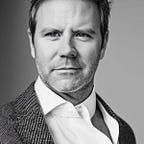The Reverse Engineer.
Why it pays to start at the end and work backward.
Ian Brown’s F.E.A.R. music video is mesmerising.
The song is not too shabby either.
The video has a simple idea…
Ian Brown is filmed cycling along London’s streets but the video is played backward. With the track played over the top, it jars with us.
The playback grabs our attention.
Maybe it’s because our worlds appear to be hurtling interminably forward.
When we watch something backward, we see it differently.
We notice the nuances.
Speaking of which…
I read an article recently.
It’s about how Amazon develops new products…
Carlos Arguelles’ article 👆 shows us that Amazon’s success is in part down to working backward:
Amazon thinks differently. You write the customer announcement before you write your code, before you write your design, in fact, ideally before you truly consider all the technical roadblocks you may encounter. You review it with your peers, stakeholders, customers, to align. Then, your technical design works backwards from it.
Why starting at the end feels so uncomfortable.
If you’re designing a service or a product, you tend to start with an idea.
Usually your idea. 😉
You get excited by the idea. You tell colleagues and friends.
You launch the idea to the public.
It might succeed. It might flop.
Whatever the result, it’s very linear; start, middle, end.
This is instinctive to us.
But Amazon flips this...
Amazon starts at the end and keeps cycling around.
It starts by listening to the end customer.
Then it works backward toward the idea. The idea is developed and tested
Amazon constantly evaluates if the idea solves the original problem.
if it does — great. if it doesn’t, the merry dance starts again.
It avoids the costly scenario where you have a solution desperately trying to find a problem.
Abhishek Kumar describes the Working Backwards Principles:
Listen stage — Who is the customer and what insights do we have about them?
Define stage — What is the prevailing customer problem/ opportunity? What data informed this?
Invent stage — What is the solution? Why is it the right solution to address the customer need versus other alternatives?
Refine stage — Describe the end-to-end customer experience. What is the most important customer benefit?
Test & Iterate stage — How will we define and measure success?
Why don’t we all ‘do an Amazon’?
Amazon is ruthless in putting the customer first.
It’s a successful strategy that’s not exactly a trade secret.
So why don’t all firms work in this way?
Maybe there’s one fundamental roadblock: ego.
Often we think our idea is so groundbreaking, and world-changing.
That any critics just ‘don’t get it’.
We say to ourselves:
“What’s right for me is right for the customer.”
But who really knows what's best?
In Amazon land, it is the paying customer.
Don’t ask me – I always get it wrong…
I work on a lot of research projects.
I can count on one hand how many times I’ve correctly guessed what a customer wants, before asking them.
It gets worse…
Whenever I’ve designed prototypes and had them tested. They have never been right first time. Ever.
But as coaches say:
“You don’t lose — you learn”
Last thought
You only really know when you start with the customer.
My advice is don’t back away from having a theory or a hypothesis to test with customers.
Encourage all colleagues to have an opinion. Everyone can contribute.
But be brave enough to have those theories tested.
And be prepared to be wrong.
You’ll have the energy to go again. This time armed with even more learnings than before.
